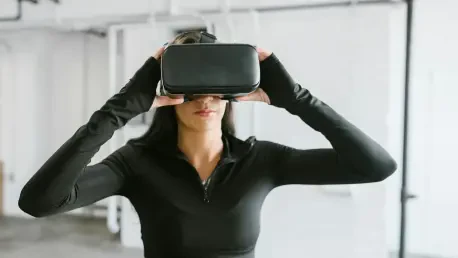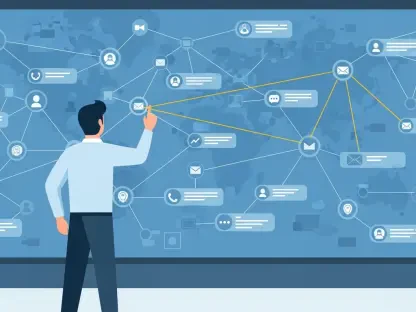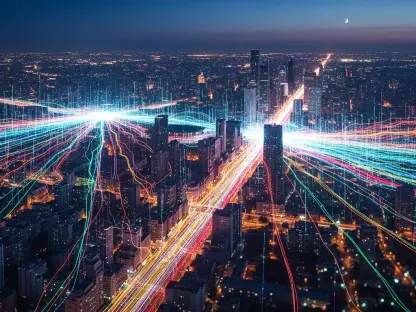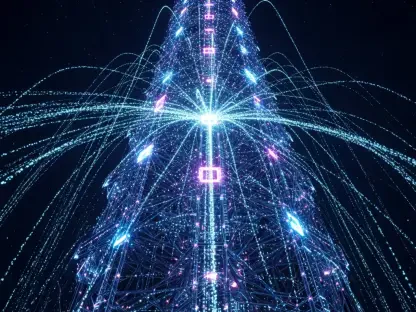Imagine stepping into a world where robots learn to navigate kitchens, factories, and living spaces not through real-world trial and error, but in meticulously crafted virtual environments. At the forefront of this innovation is Laurent Giraid, a technologist with deep expertise in artificial intelligence, machine learning, and natural language processing. With a keen interest in the ethical implications of AI, Laurent has been instrumental in advancing how generative AI can create diverse, realistic training grounds for robots. In this interview, we dive into the groundbreaking concept of steerable scene generation, exploring how it transforms robot training, the challenges of real-world data collection, and the cutting-edge strategies that make these simulations lifelike and practical for roboticists.
Can you explain what steerable scene generation is and why it’s a game-changer for training robots?
Steerable scene generation is a method we’ve developed to create highly detailed and realistic 3D virtual environments for robot training. Essentially, it uses generative AI to build scenes—like kitchens or restaurants—where robots can simulate real-world tasks such as stacking objects or arranging items. What makes it a game-changer is its ability to produce diverse, physically accurate environments quickly, without the need to manually design each setting or rely on cumbersome real-world data collection. It allows us to expose robots to countless scenarios, helping them learn adaptability and precision in a controlled, virtual space.
What are some of the biggest hurdles in collecting real-world training data for robots, and how does this approach address them?
Collecting real-world data for robots is incredibly challenging primarily due to the time and resources it demands. Demonstrating tasks with physical robots isn’t just slow—it’s also hard to replicate perfectly each time due to variables like wear and tear or slight environmental changes. Imagine trying to record thousands of ‘how-to’ videos for every possible task; it’s simply not feasible at scale. Steerable scene generation sidesteps this by creating simulations that mimic real-world physics and diversity, offering a faster, more flexible alternative. While it’s not a perfect substitute for real data, it significantly reduces the dependency on physical demonstrations and lets us iterate endlessly in a digital space.
How does steerable scene generation use diffusion models to craft these 3D environments?
Diffusion models are at the heart of this technology. They start with random noise and gradually refine it into a coherent visual output, much like turning a blank canvas into a detailed painting. In our case, we ‘steer’ the model to generate specific 3D scenes by guiding it toward realistic arrangements of objects. We use a process called in-painting to fill in elements of the scene, ensuring that objects like forks and plates are placed logically. By steering the model, we avoid common graphical errors and create environments that closely mirror real-world settings, which is critical for effective robot training.
Can you tell us more about the Monte Carlo Tree Search strategy and its role in enhancing these virtual scenes?
Monte Carlo Tree Search, or MCTS, is a decision-making strategy we borrowed from AI systems like AlphaGo. In the context of scene generation, it works by exploring multiple possible arrangements of a scene, building it step by step toward a specific goal—say, maximizing physical realism or including a certain number of objects. MCTS evaluates different paths and chooses the most promising one, allowing us to create scenes far more complex than what the model was initially trained on. It’s like playing a game of chess with the environment, thinking several moves ahead to achieve the best outcome.
In one experiment, MCTS helped create a restaurant scene with 34 items on a table. Can you walk us through how that level of detail was achieved?
Absolutely. In that experiment, we tasked MCTS with maximizing the number of objects in a restaurant setting, starting from a baseline where scenes typically had about 17 items. MCTS iteratively built upon partial scenes, considering different ways to add objects like dishes and utensils while maintaining realism. It would test various stacks and arrangements—think towering piles of dim sum dishes—choosing the configuration that best met our objective without breaking physical rules. The result was a densely populated, yet believable table setup with 34 items, showcasing how MCTS pushes the boundaries of complexity in a controlled way.
How does reinforcement learning play a part in making these virtual environments more diverse and useful?
Reinforcement learning is another key piece of the puzzle. It’s essentially a trial-and-error approach where the system learns to create scenes by aiming for specific rewards or goals, like achieving a high degree of realism or aligning with a particular task. After initial training on a dataset of scenes, we set up a second training phase where the model gets feedback based on how well it meets these goals. Over time, it learns to generate scenarios that often differ significantly from the original training data, giving us a wider variety of environments to work with and ensuring robots are trained on unique, challenging setups.
The ability for users to input specific prompts to generate scenes sounds fascinating. Can you share how that works in practice?
It’s one of the most exciting features of steerable scene generation. Users can type in detailed descriptions—like ‘a kitchen with four apples and a bowl on the table’—and the system translates that into a 3D scene. It interprets the prompt by pulling from its library of assets and arranging them accordingly, guided by our steering methods to ensure accuracy. For instance, we’ve seen success rates as high as 98% for pantry shelf scenes based on user input. This direct control makes it incredibly user-friendly for roboticists who need tailored environments without starting from scratch each time.
Looking ahead, what’s your forecast for the future of generative AI in robot training environments?
I’m incredibly optimistic about where this is headed. I believe generative AI will soon move beyond just rearranging existing assets to creating entirely new objects and scenes from scratch, vastly expanding the possibilities for simulation. We’re also likely to see more integration of real-world data, perhaps by pulling from vast internet image libraries to enhance realism. Additionally, incorporating interactive elements—like cabinets that open or jars with contents—could make these environments even more dynamic. Ultimately, I foresee a future where these virtual training grounds become so sophisticated that they’re indistinguishable from reality, paving the way for robots to learn skills with unprecedented speed and accuracy before ever stepping into the physical world.









